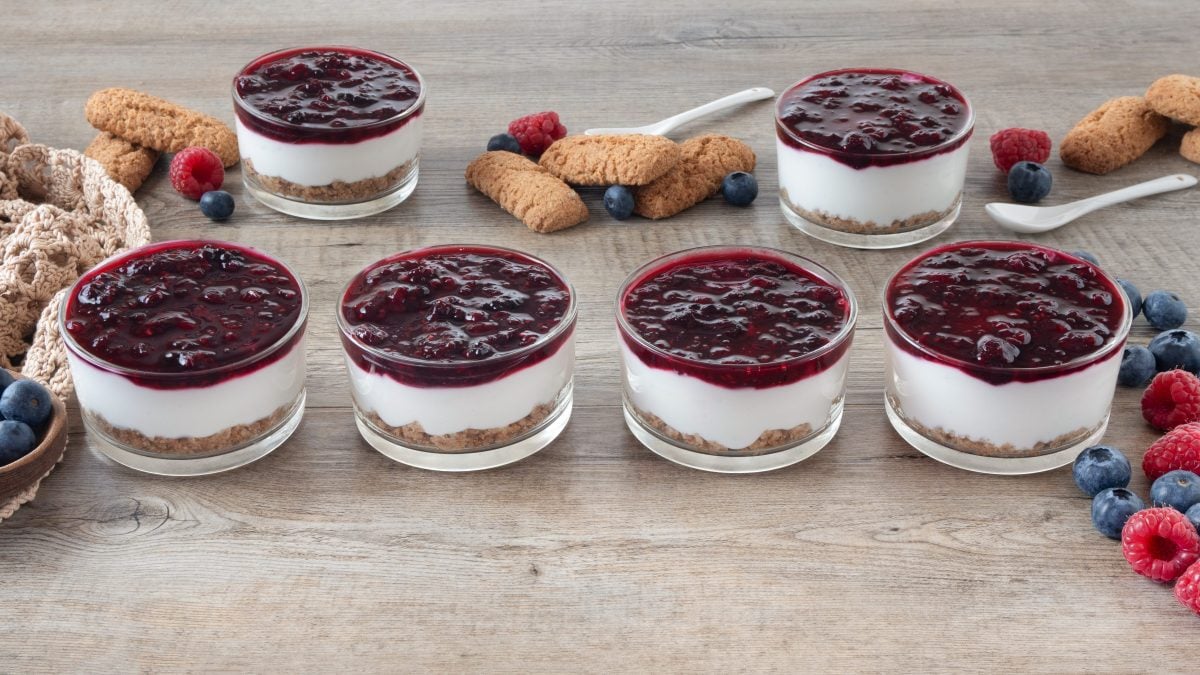
The Low-Fat Greek Yogurt Cheesecake is a light, but equally delicious, variant of the classic cold cheesecake. Prepared with a base of wholemeal biscuits and skimmed milk, and a filling of natural Greek yogurt, it is completed with a compote of berries and is ideal for those following a low-calorie diet or want a sweet treat without feeling guilty.
Very easy to prepare, it does not require gelatin, oil or butter. Once all the various elements are ready, it will be sufficient to assemble them in special glass cups, to be placed in the refrigerator for an hour: the result is fresh and delicious single portions, excellent to enjoy for breakfast or as a snack, but also to serve as a dessert at the end of a convivial dinner.
What is No-Bake Low Fat Cheesecake?
Greek yogurt, though rooted in Mediterranean traditions, gained widespread popularity in the United States in the early 2000s as a protein-rich, probiotic-packed alternative to traditional yogurts. Its thick, creamy texture made it an ideal ingredient for health-conscious adaptations of indulgent desserts. Meanwhile, cheesecake—a quintessentially rich, creamy dessert long beloved in American cuisine—began undergoing a transformation in response to rising health trends in the late 20th century. With the fitness boom of the 1980s and the rise of diet culture, home cooks and food companies alike began reimagining classic recipes. Greek yogurt emerged as a hero ingredient, offering creaminess without the fat, and became a staple in low-fat, sugar-free cheesecake recipes. These lighter versions honored the decadent feel of traditional New York-style cheesecake while aligning with a growing demand for wellness-focused desserts.
Pro Tips for The Best No-Bake Low Fat Cheesecake
- Even though the recipe is light, using full-fat Greek yogurt can create a creamier texture without significantly increasing the calories. Low-fat versions may be thinner and result in a slightly less firm cake.
- If your Greek yogurt seems watery, strain it through cheesecloth for a few hours. Excess moisture can make the cheesecake soggy or prevent it from setting properly.
- The flavors meld and the texture improves dramatically with a full 12-hour chill in the fridge. This makes it perfect for prepping the day before serving.
What Can I Substitute Greek Yogurt With?
If you're out of Greek yogurt or need a substitute for dietary reasons, several options work well in cheesecake recipes. For a similar texture and tang, try Skyr or Quark, both of which are high in protein and creamy. Blended cottage cheese or ricotta also makes a great low-fat alternative, while sour cream adds richness with a slight tang. For dairy-free or vegan options, silken tofu or thick, unsweetened plant-based yogurts (like almond or coconut) can mimic the creaminess of Greek yogurt—especially when blended with a splash of lemon juice for added zing.
Can I Use Another Topping?
Absolutely! You can easily swap the topping to suit your taste—fresh berries, a light fruit compote, lemon curd, or a drizzle of dark chocolate all pair beautifully with a light cheesecake. Just keep it simple and balanced to maintain the “light” feel of the dessert.
Why Didn't The Mini Cheesecakes Set?
If your mini cheesecakes didn’t set in the fridge, a few common issues could be the cause. Most likely, they needed more time to chill—light, no-bake cheesecakes with Greek yogurt often require at least 8–12 hours to fully firm up. Another possibility is too much moisture in the mixture, especially if the yogurt wasn’t strained enough or if watery toppings were added too early.
Can I Make One Whole Cheesecake, Instead?
Yes, you can! Just pour the entire mixture into a springform pan or pie dish lined with parchment or a light crust. Keep in mind that a full-size cheesecake will require a longer chilling time—ideally overnight (12+ hours)—to set properly. If it's a no-bake recipe, you might also consider using a stabilizer like gelatin or agar-agar to ensure a firm texture throughout. Just make sure the pan is deep enough to hold the full volume of filling.
Can I Make it Ahead of Time?
Yes, making mini cheesecakes ahead of time is a great idea! They actually taste better after chilling, so preparing them a day or two in advance allows the flavors to develop and the texture to firm up perfectly. Just store them covered in the refrigerator to prevent drying out or absorbing odors. If you're adding fresh toppings, wait until just before serving to keep them fresh and vibrant.
Does It Freeze Well?
Yes, mini cheesecakes freeze very well! Once set, wrap each one tightly in plastic wrap and place them in an airtight container or freezer bag. They can be stored for up to 2 months. To enjoy, thaw them in the refrigerator overnight. For best results, freeze them without toppings, and add fresh fruit or sauces just before serving to maintain texture and flavor.
How to Store No Bake Low-Fat Greek Yogurt Mini Cheesecakes
To store leftover mini cheesecakes, place them in an airtight container and refrigerate for up to 4–5 days. Keep them uncovered just until they're fully chilled (to avoid condensation), then cover to maintain freshness. If they’ve already been topped with fruit or sauces, try to keep those separate to prevent sogginess.
Ingredients
How to Make No Bake Low-Fat Greek Yogurt Mini Cheesecakes
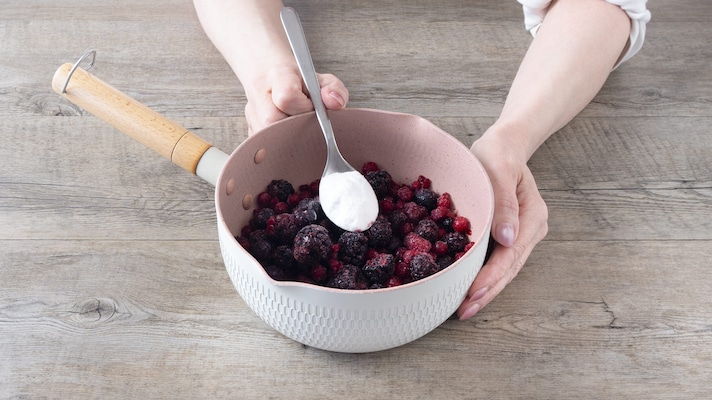
Collect the frozen berries in a saucepan, add the stevia and bring to the boil. Cook over low heat for about ten minutes, stirring occasionally.
Collect the frozen berries in a saucepan, add the stevia and bring to the boil. Cook over low heat for about ten minutes, stirring occasionally.
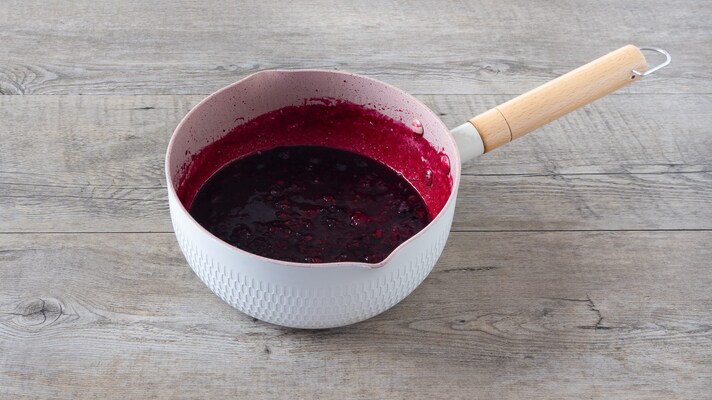
Once you have obtained a creamy mixture, remove it from the stove and let it cool completely, first at room temperature, then in the refrigerator.
Once you have obtained a creamy mixture, remove it from the stove and let it cool completely, first at room temperature, then in the refrigerator.
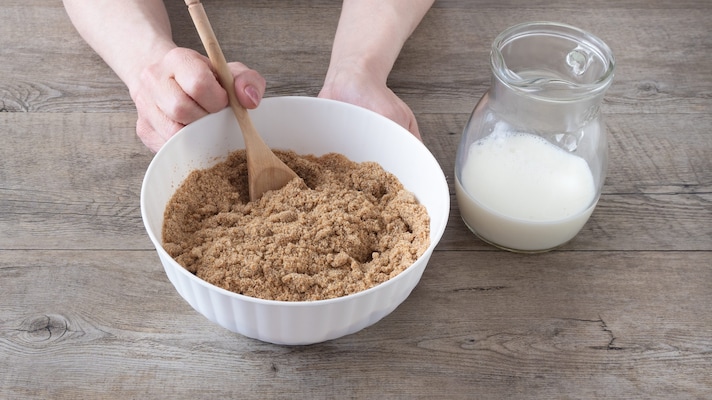
Grind the biscuits with a kitchen mixer, place the flour in a bowl, pour in the milk and mix.
Grind the biscuits with a kitchen mixer, place the flour in a bowl, pour in the milk and mix.
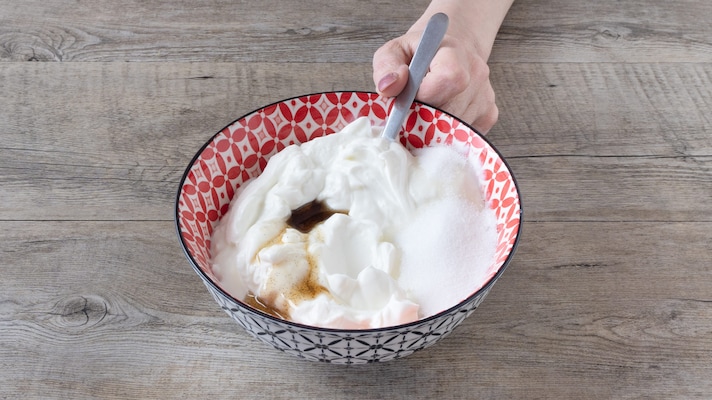
In another bowl combine the yogurt, stevia and vanilla extract, then mix until you get a smooth mixture.
In another bowl combine the yogurt, stevia and vanilla extract, then mix until you get a smooth mixture.
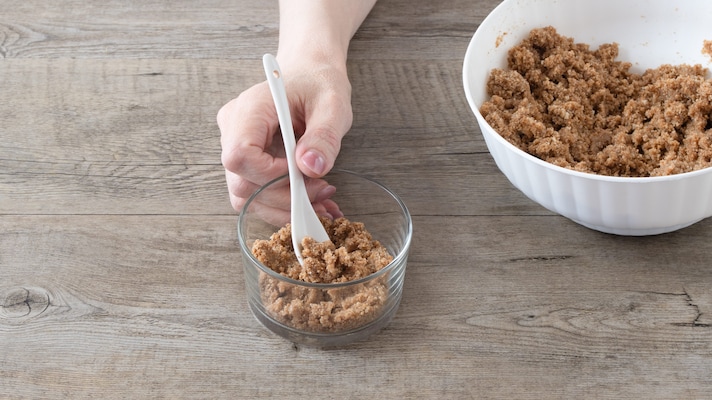
Start composing the mini cheesecakes: place a layer of biscuits on the bottom of the individual cups.
Start composing the mini cheesecakes: place a layer of biscuits on the bottom of the individual cups.
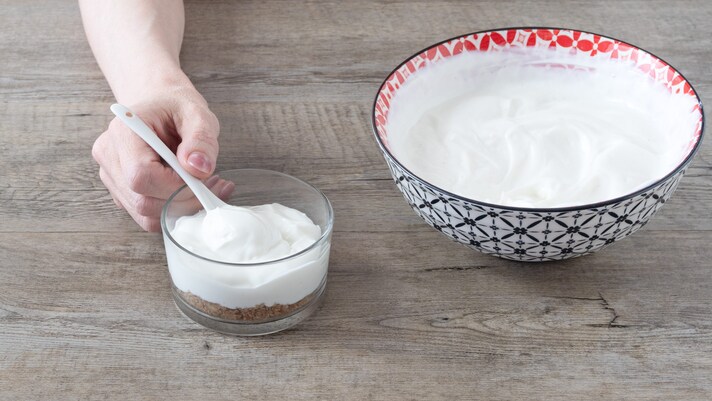
Spread the yogurt cream.
Spread the yogurt cream.
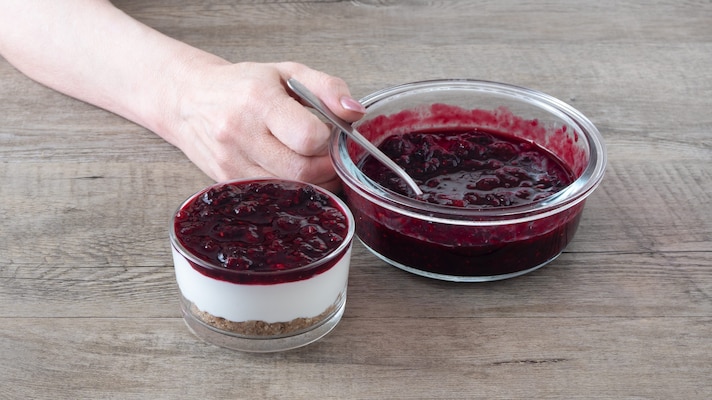
Add the berry compote on top.
Add the berry compote on top.
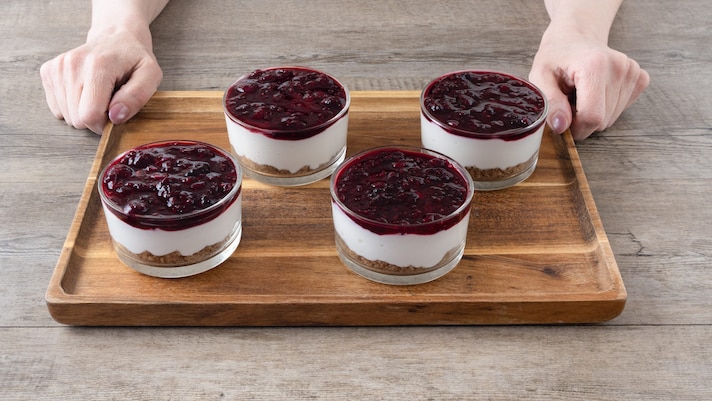
Proceed in the same way by arranging the rest of the ingredients in the remaining cups, then arrange them on a tray and place them in the fridge for at least 1 hour.
Proceed in the same way by arranging the rest of the ingredients in the remaining cups, then arrange them on a tray and place them in the fridge for at least 1 hour.
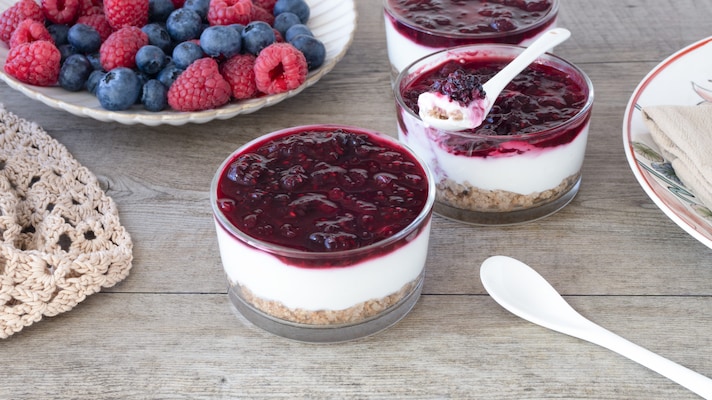
Enjoy!
Enjoy!
;Resize,width=767;)
